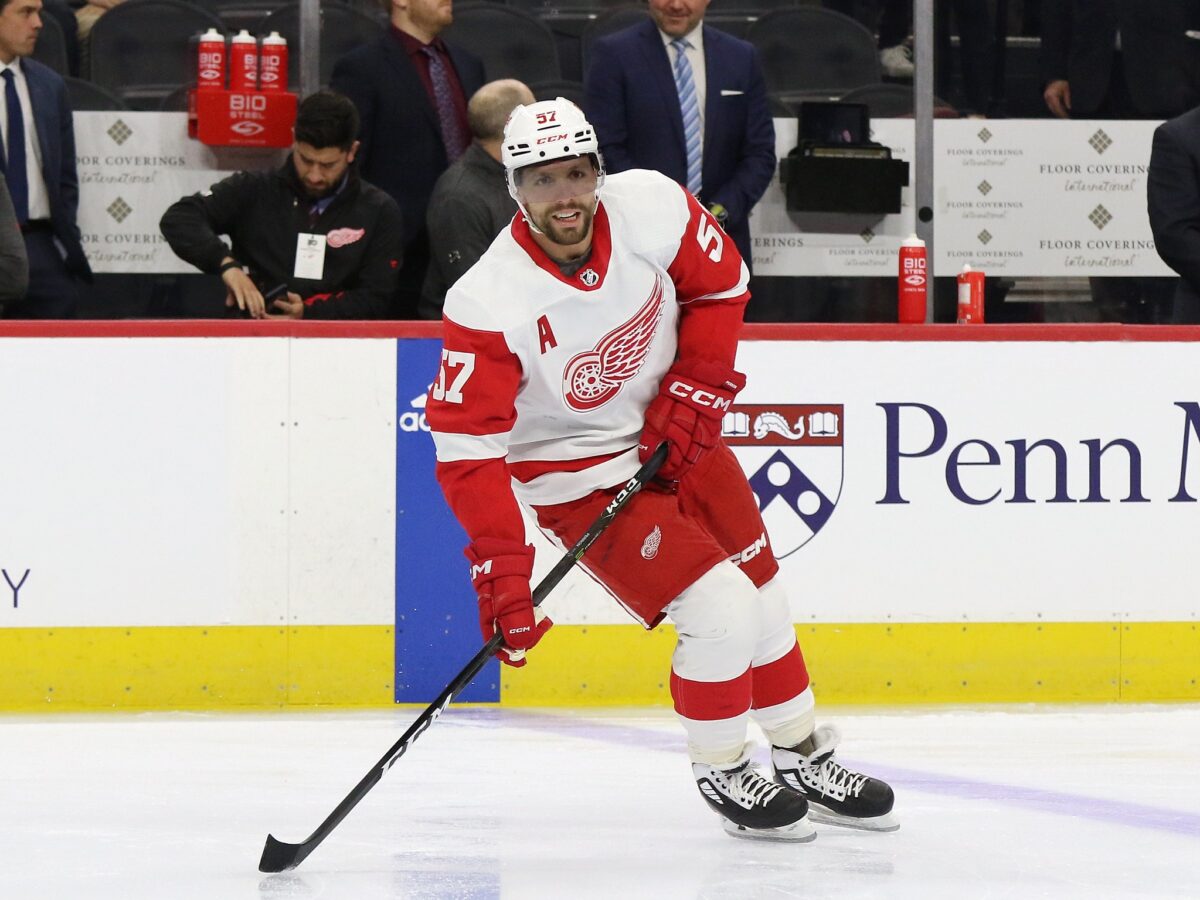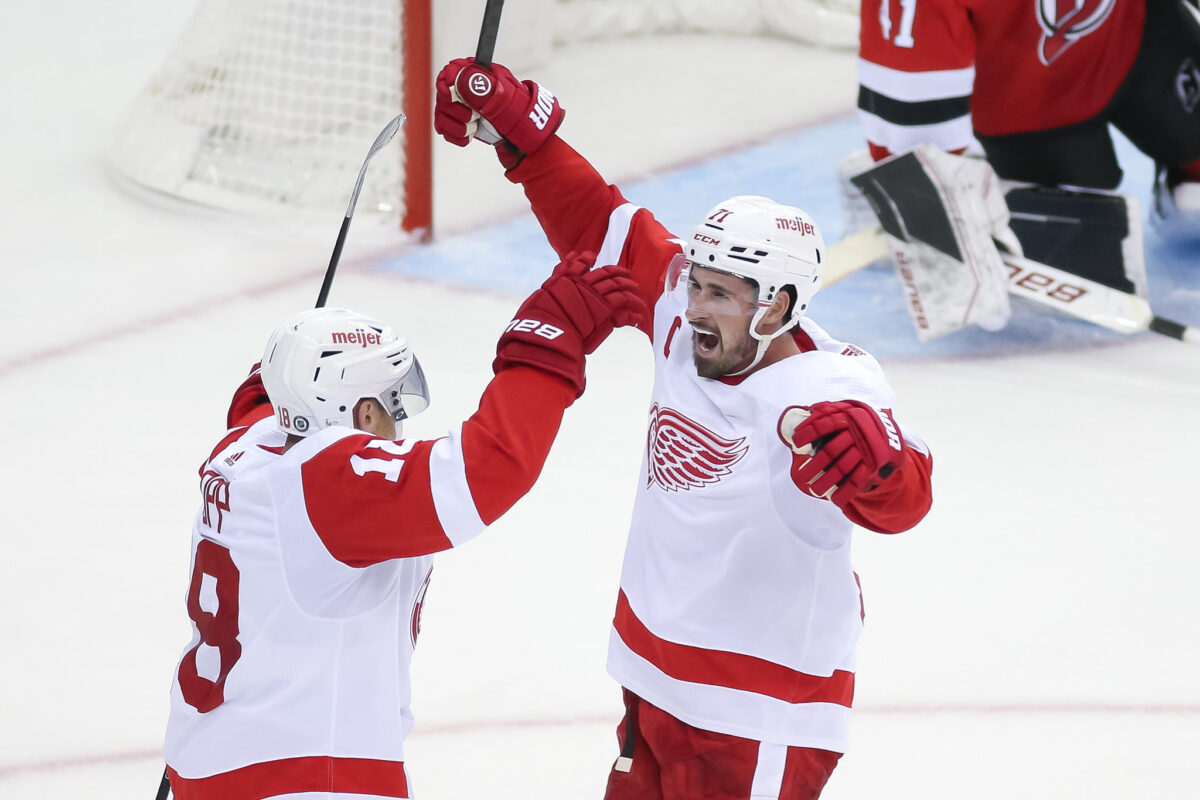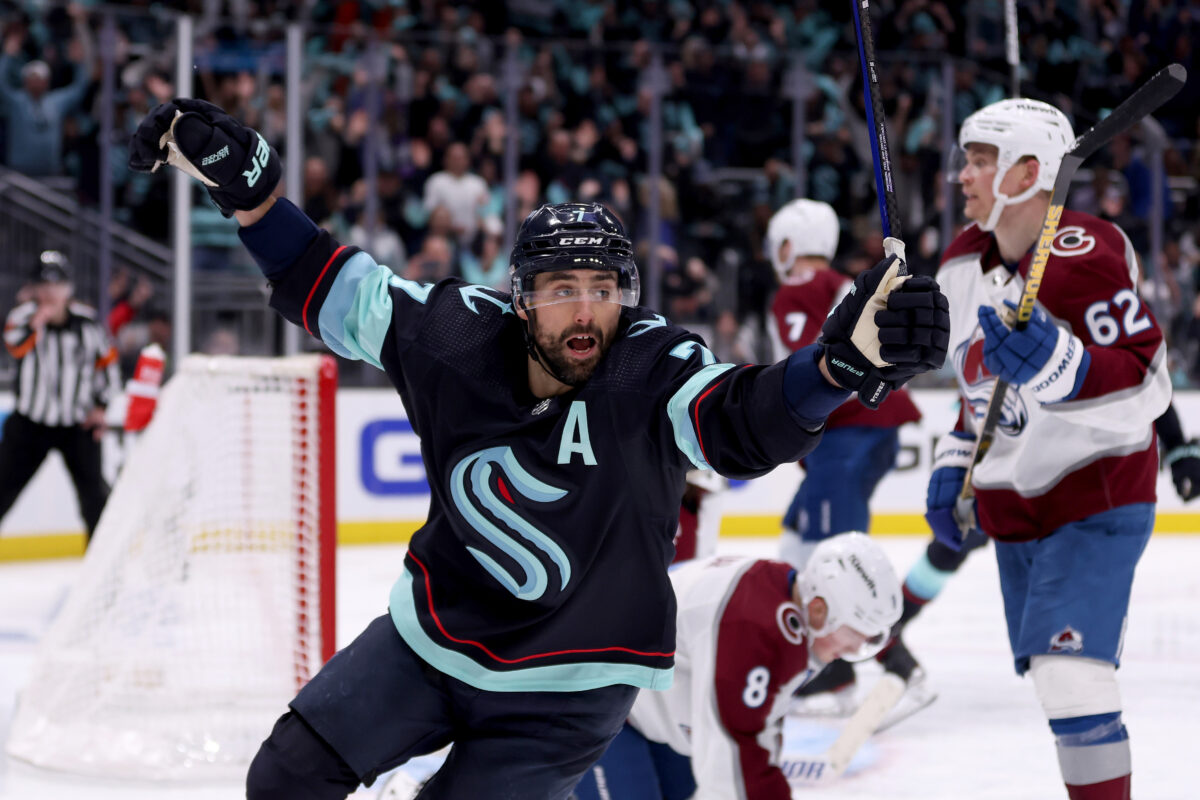Following the holiday break, the Detroit Red Wings opted to deploy David Perron on the first line alongside Dylan Larkin and Lucas Raymond. The results have not been pretty – six goals for, 11 against, and a 35.79 percent expected goals share at even strength.
During the Philadelphia Flyers game on Jan. 25, the Red Wings replaced Perron on the top line with Alex DeBrincat, pushing the former to the second line with J.T. Compher and Robby Fabbri. The impending return of Patrick Kane likely means him being paired with DeBrincat, leaving an open spot on the top line.
Related: Red Wings News & Rumors: Help On Defense, Free Agents & More
The question, now, is who will join Larkin and Raymond moving forward? There are a few options to consider – both the player and the downstream effect.
Red Wings’ Option 1: Perron or Fabbri
The data says that Perron shouldn’t be on Detroit’s top line. Fabbri has been slightly better in this role – two goals for and two against in just over 25 minutes of five-on-five play. Neither are ideal, though.

There’s a chance the Red Wings could plug the hole with one of these two players, which would be fine. They’re scorers, after all. More time on the top line could breed better results.
If this is to be the case, then I don’t anticipate Detroit adding much up front at the trade deadline. This strategy would keep Kane, DeBrincat, and Compher together on the second line, and the bottom six intact.
If anything, they could pursue a depth center with strong defensive and penalty kill numbers. That would be a luxury add, though. More importantly, Detroit’s top draft picks and prospects would remain with the organization.
Red Wings’ Option 2: Copp or Rasmussen
Detroit’s third line of Andrew Copp, Michael Rasmussen, and Christian Fischer has been a reliable unit for Derek Lalonde, and could be the answer to the Red Wings’ first line question. Both Copp and Rasmussen have the ability to play the role of “first man in” on a top-six line.
Copp has spent exactly 2:40 with Larkin and Raymond at five-on-five, so there’s not a lot of data to go off of there. Rasmussen is in a similar boat – 7:25 of ice time on the top line. Still, it’s their style of play that makes them worthwhile options to consider.

Let’s say Copp moves up to the first line, then what becomes of Detroit’s effective checking line? And the bottom six overall?
One strategy would be to turn the third line into a scoring line, and rely on the fourth line as a matchup unit. This would entail Fabbri, Perron, and Joe Veleno in a scoring role, with Rasmussen, Fischer, and Daniel Sprong serving as the checking line. Not ideal, but definitely not the worst bottom-six lines we’ve seen.
They could also pursue a defensively inclined middle-six winger—preferably a rental that comes at a low cost—to take Copp’s spot on the current third/checking line, with Rasmussen taking over the center role. If the Pittsburgh Penguins want to clear cap space, Reilly Smith would fit in nicely.
Another option would be to promote someone from Grand Rapids. How about Marco Kasper with Rasmussen and Fischer? Talk about an energy line.
Red Wings’ Option 3: Trade Deadline Acquisition
The last option would be to go out and acquire a top-line wing at the trade deadline. This doesn’t have to be a truly elite forward, just someone who would fit in well with Larkin and Raymond.
Jordan Eberle could be an attractive option if the Seattle Kraken decide to sell. The veteran winger has nine goals and 28 points in 46 games this year playing on the Kraken’s first line. Eberle would be a rental and the Red Wings could afford his entire cap hit – $5.5 million.

A better solution would be to acquire a top-six talent with term so they can be part of the future in Detroit. This would obviously cost more than a rental, but would provide more value to the team.
Andrew Mangiapane, Frank Vatrano, and Pavel Buchnevich are all signed through 2025 and represent potential—albeit expensive—solutions. There’s also Trevor Zegras, who is rumored to be on the trade block, though there are concerns about his defensive play.
All of these external options come with a price. And it’s no guarantee any of these players are truly available.
Optimal Strategy for the Red Wings
We won’t know which direction—buy or sell—the Red Wings will take until right before the trade deadline. Until then, they should try Copp and/or Rasmussen on the top line. Both are strong along the boards and could complement Larkin and Raymond well.
Next: Projecting Moritz Seider’s New Red Wings Contract
Provided the Red Wings have a shot at the playoffs, Copp and/or Rasmussen’s success—or lack thereof—will determine Detroit’s next step. If one does well on the top line, then Detroit should pursue a depth forward at the deadline. But if neither lock down the role, then Steve Yzerman needs to consider an external option to slot into the first line.
Data courtesy of Natural Stat Trick.
